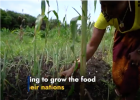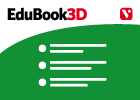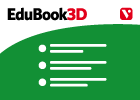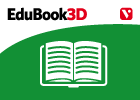Cargando...
Recursos educativos
-
Nivel educativo
-
Competencias
-
Tipología
-
Idioma
-
Tipo de medio
-
Tipo de actividad
-
Destinatarios
-
Tipo de audiencia
-
Creador
Lo más buscado
- Repaso de lengua castellana para segundo
- Civilizaciones de la antigüedad
- El Egipto faraónico
- Sea animals
- Juegos para aprender en ESO
- Juegos matemáticos tercero
- Actividades educativas para niños en cuarto
- Letras S
- Imprimir material primero
- Figuras literarias
- Derechos de la infancia
- Manualidades primaria
- Imprimir material para P2
- Constitución española
- Actividades de lectoescritura en tercero
-

Looking back on 2022
V&V Books Vicens Vives Organización
- 1106 visitas
It's been another busy year for the UN's International Fund for Agricultural Development (IFAD). Investing in the world's poorest rural people, we continue t...
-

Ancient History
EduBook Organización
- 3 lo usan
- 19303 visitas
Ancient history began in about 4000 BC when writing was invented. About the year 1000 BC, two different tribes called the Iberians and the Celts lived on the Iberian Peninsula. In the year 218 BC, the…
-

True/false. The geography of population
EduBook Organización
- 8397 visitas
Are the following statements true or false?: The fertility rate shows the number of children per woman per year. The rate of natural increase is the difference between the birth rate and the mortality…
-

-

Inequality in the global population
EduBook Organización
- 5025 visitas
3.1. Population dynamics The main factors that cause populations to change are: Birth rate. This is the number of births in a population in a year. Mortality rate. This is the number of deaths in a…
-

Entrevista a Chris Rogers
Rocío Lara López Docente
- 1 lo usan
- 4787 visitas
He was awarded the Carnegie Professor of the Year in Massachusetts in 1998 and is currently the director of the Center for Engineering Education Outreach.His teaching work extends to the elementary…
-

Unit 1: Our planet Earth
EduBook Organización
- 4413 visitas
Asteroid (n): a small body of rock and metal that orbits the Sun. axis (n): the imaginary line that the Earth spins on. Earth (n): the planet on which we live. equator (n): an imaginary line that…
-

The Fourteen Pigeons
EduBook Organización
- 3968 visitas
After a year and a day, the juggler brought Calum back to his home in Scotland. Calum was now an excellent juggler. He could juggle seven spiked balls and he never hurt his hands with the spikes. Hamish…
-

Final self-evaluation T13 02 - Transition and democracy in Spain (1975-2...
EduBook Organización
- 4035 visitas
Choose the correct answer: When did Juan Carlos I become King of Spain? How many autonomous communities are there in Spain? And autonomous cities? In which year did the Aznar government suspend…
-

Understanding the text - The Fourteen Pigeons
EduBook Organización
- 3553 visitas
After a year and a day, the juggler brought Calum back to his home in Scotland. Calum was now an excellent juggler. He could juggle seven spiked balls and he never hurt his hands with the spikes. Hamish…
Te estamos redirigiendo a la ficha del libro...










